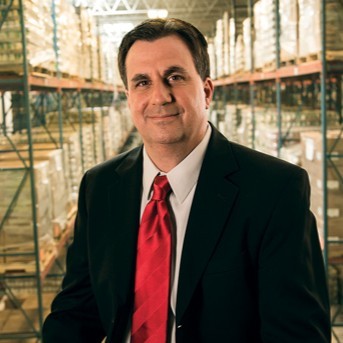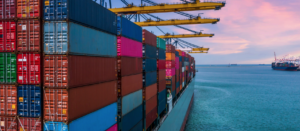GUEST OPINION BY BRIAN GREENE, CEO OF HOUSTON FOOD BANK – In the early days of the Feeding America network, the prevalent thought was that if we just distributed enough food, we would end hunger in America. We were wrong. The network long ago reached the amount of distribution that would have theoretically eliminated the meal gap of the 1980s. Yet there is just as much hunger in the U.S. as there was when we started.

Sure, a lot of the problem is the nature of our low-wage economy. But an even greater reason is that our theory of change was flawed. We now know that it was naïve of us to treat hunger or the larger issue of food insecurity as an isolated problem. Food insecurity isn’t about food, it’s about income. The families struggling with food security are almost always struggling with other expenses as well.
When we provide food to a family we are also helping them pay for rent, utilities or other expenses. This means that food insecurity isn’t really its own issue. People show up in our lines because food is generally their most flexible expense, and food assistance is the most readily available form of charitable aid. Other forms of charitable support, such as rent or utility assistance, are highly limited, if available at all. With 60,000 agency outlets, charitable help with food is far more accessible. It is therefore little wonder that we see income insecurity manifesting so often as food insecurity.
If we agree that food insecurity isn’t about food, then here is how I think food banks should act differently.
- Quit Saying We Need to Do More Because of Rising Need
Since need correlates to an income gap and not a food gap, food banks don’t meet need and we never have. Yes, we help families, but the income gap overall stays far above what we can do. Sure, it makes the story easy if we say we need to do more because inflation or unemployment or GDP has changed, but that framing presupposes that we were doing as much as needed before.
This is why during the ten-year period prior to Covid, the total Feeding America network output almost doubled even though inflation was low, GDP grew, and unemployment consistently fell. The reason we were able to serve more food to more people than ever before is because supply, support, and infrastructure are the real ceiling, not need.
We are tempted to label the number of people served as the “demand.” It isn’t. It isn’t even close. Most pantries will only serve a family up to once per month, and then with a quantity of food intended to last roughly three days. The pantry system isn’t designed to meet need. It’s designed to ration what we have (and cater to the preconceptions and desires of people who aren’t themselves struggling). And often it actively discourages participation with limited hours, restrictions, poor customer service, paternalistic decision making and a perception of shaming. What our neighbors would “demand” without the impediments our system has in place is always far more than what we supply. We are never doing as much as people need. Yet again and again we foster the mistaken belief that when we do more, it is because the need changed.
- Do More of Some vs. Some of All
Food banks are in the leverage business. We’re the ones who can take a dollar and turn it into many dollars’ worth of assistance. In addition to environmental benefits, the fundamental value of food banks is providing far more food for every dollar spent.
But not when we buy food. The food industry is a low-margin business. Sure, we can buy food a little cheaper than the neighbors we serve, but only marginally. If purchasing is the only option, the families would be far better served if we gave them gift cards so they could buy what they need rather than what other people think they need. Purchasing food is the worst way for us to invest dollars.
Instead of trying to provide everything a family needs, a far better strategy is to provide a lot of some of what they need. “More of some” versus “some of all” enables food banks to maximize the dollar value of assistance. This even applies as food banks correctly pursue culturally responsive foods to better help underserved communities. Our own research has shown that across cultures there are food preferences that fit with what food banks can most readily receive as donations.
- Produce is the Future
Funds currently being used to purchase food for pantries would be far better spent on produce (and infrastructure to handle perishables) where the leverage and opportunities are still huge. There are billions of pounds of surplus produce. While currently only a small number of food banks distribute primarily produce, I believe our best future is a network with 70% or more of our distribution in produce. That is where the most usable surplus is and the best nutrition. We can do far more than we do now if we do it with produce.
This will require re-orienting our distribution partners away from the three-day emergency food box model to being willing to distribute more frequently and providing more of some versus some of all. It will require infrastructure investments at both the local and regional levels (such as mixing and boxing centers). And it will require food banks to cooperate with each other instead of competing. But it can be done.
- Shortening the Line Starts with Serving It
To end the line, we need to keep serving it. It’s our ticket to the game, and the more we maximize the dollar and nutrition value we inject into our communities, the more we not only provide help today, but also impact the long term. With millions of dollars of resources at the local level and billions at the national level, we can be far more than just nice people saying they want a better world with no real ability to help make that happen. We can make a lot happen. In addition, we have 60,000 collaborations with other organizations, bringing tens of millions of people to the table. That’s a big ticket to the game and we should treat that seriously.
That also means we have a special responsibility to treat equity seriously. Most people and organizations don’t really have much power to make equity more than just talk. We do. But for most of our history our growth has been more about the “path of least resistance,” with resources flowing to where they could be most readily used, rather than where they are most needed.
Fortunately, we do know how to get better at this, especially through data. We can target thousands, hundreds of thousands, or even millions of dollars in resources to underserved communities. We can also use our influence to encourage more dignified and equitable food-assistance experiences. We can push ourselves and our partners to bring the people we serve into the decision tent. I seriously doubt that many existing practices for food banks and our partners would be in place if the people we served were able to voice how we can best help them succeed. Given our position and resources, inclusion has great prospects for helping us move towards equity.
- We Need to Think Like Investors
In addition to looking at our food distribution through an equity lens, we also should be looking at it through an impact lens. Instead of just being satisfied by passing out food, we should try to invest food resources where they can have impact beyond today. Those investments in food resources should meet two conditions:
Efficacy: Most behavior or social change programs that sound good don’t actually work. Unfortunately, those programs aren’t weeded out because the donors don’t look hard enough and it is too tempting to stick to the pretty stories. For any shorten-the-line program we should ask the question, “What is the evidence this program significantly improves lives?” And then go with that evidence.
Scale: Shorten the line means the line gets meaningfully shorter as a result of the initiative. The One Percent Rule is a good test. If the program is not impacting at least one percent of the relevant population, then it’s too limited in scale to be changing the length of the line. For a food bank with 100,000 people experiencing food insecurity, a program is not relevant if it cannot help at least 1,000 people a year. That doesn’t mean it’s not a nice thing to do, but if we are serious about reducing need, we need to focus on initiatives that can operate at a relevant scale.
- We Need to Put Other Missions Ahead of Ours
It is unlikely that food banks can shorten the line outside of partnerships with other organizations that offer great programming at scale. For instance, our small-scale warehouse or kitchen job-training programs are no match for community college certificate programs in terms of efficacy and scale. Meanwhile, millions of low-wage workers enroll in certificate programs, yet only around 40% finish. We can help.
But not with college pantries. Deploying classic food-bank distribution methods is thinking too much about our world instead of theirs. Using our resources – not to fight hunger in college – but as a significant and reliable economic resource to improve the chances of graduation means working from the perspective of the community college’s goals, not ours.
If a foundation told your local community college that they could give $2,000 scholarships to every student who needs one, that would be a game changer. Feeding America food banks can be those foundations, just in the form of food scholarships instead of monetary scholarships. It’s harder, but we already have the resources we need to make these kinds of commitments in support of organizations that are already skilled and scaled to shorten the line. And if we succeed, then that will lead to meeting our goals.
I want to hammer this point home. Shorten the line means not seeing our mission as just parallel or complementary to the work of quality programs such as community colleges, clinics, and job training programs, but using our abilities and resources to serve their missions. It means saying, “I have millions of dollars of food, partnerships with dozens or hundreds of organizations, and reach many thousands of people you want to impact. How can I help you win?”
- We Need to Advocate Beyond Food
While food security is where we are expected to advocate, the families we serve will probably take victories wherever they can get them. During the pandemic, we saw SNAP enhancement, the child tax credit and rising wages all make a big difference in how many people turned to us for help. Does it really matter to us where the wins happen? If the most feasible gain is affordable housing, then it makes sense for us to work hard in that direction. If it is a higher minimum wage, so be it. Can we get the child tax credit back? That would be a huge win for shortening the line.
We have allowed ourselves to become pigeonholed as food advocacy. Yes, we have our greatest credibility in that space, but there is surprising credibility when we advocate for issues that are not seen as our own interest. At the state and local level having this perspective has changed Houston Food Bank’s relationships with many other organizations as we made it clear that this isn’t about us or even our cause, but rather finding the best outcomes for the people we and the other organizations serve.
- Food Banks Should Act as Conveners
A country as rich as ours can thrive without poverty. We can make our political economy work for all. But this will not happen until we achieve national consensus on our economic policies. Fighting over marginal changes that are simply undone by the following legislature or administration is never going to get us there.
The Feeding America network can play an important role in developing that national consensus. We are the largest nexus for people who are struggling to get by and people who want to help. Food brings people together – and we are that in hyperdrive. We have millions of volunteers who clearly don’t want to see people suffering and tens of millions of people who are struggling for reasons the people in the first group do not understand.
We should bring those people together. Food banks are wonderfully positioned to be conveners (not experts) for an increasingly divided America to come together in a safe space to better understand each other and work to achieve a shared philosophy of the economic and social policies we should have in the future. This is a very different charge than we have taken on, and I don’t know how to do it. But imagine the powerful force it will be if we do succeed in helping people from very different circumstances and perspectives come to agreement on how we can have an economy that thrives and works for everyone.
Like what you’re reading?
Support Food Bank News









